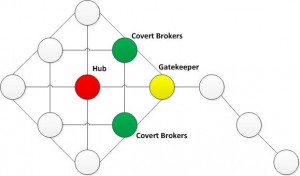Networking or Marketing: How to Escape the Advertising Trap and Get Real
Several weeks ago, I fell into a network trap. I asked someone for her business card without getting to know her first. We were at a networking event so it wasn’t rude or unexpected. She gave the card to me although I could tell she wasn’t thrilled with me or my request.
People do this all the time. They exchange cards with acquaintances and then go back to the office and file them. Perhaps they add them to their emailing list and then they congratulate themselves: “Wow! I’m up to 1000 people on my email list. I’m hot stuff!”
The problem is that there is a big difference between developing genuine networks and advertising.














